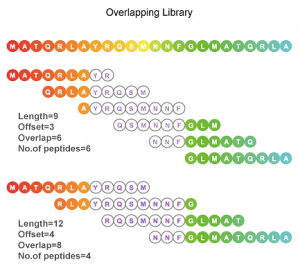What is a peptide library
Peptide library is a group of a large number of several million or more peptides arranged in sequence, that is, the combination of amino acid sequences of peptides of this length. The peptide library is a series of peptides and amino acid chains, which are an important part of life. Peptide libraries can be produced by companies that specialize in peptides and other biological materials, or they can be produced in the laboratory. In a laboratory capable of synthesizing peptides, many researchers order peptide libraries from companies. Complete the order very quickly. Peptide libraries are generally available to anyone who wants to order. Like many biological materials used in research, peptides are not strictly controlled because they are not considered potentially dangerous. This also makes it easy for laboratories and researchers to quickly obtain the peptides they need. In contrast, dangerous biological materials such as viruses may be restricted.
Types of peptide libraries
The simplest combinatorial peptide library is the Parallel library. The peptides of each sequence in this peptide library are synthesized in a separate reactor to ensure the quality of the peptide library. This method has a small amount of synthesis and can improve efficiency through automation and microwave technology.
The second peptide library is the Random library, which generates millions of peptides with different sequences in each reactor, which facilitates rapid screening of a large number of peptides.
What is an overlapping peptide library
Overlapping Peptide Library-This tool allows you to generate overlapping peptides to cover the full length of the protein of interest. You can define sequence parameters, such as the length of the peptide segment and the number of amino acid offsets (see fig1). The designed sequence can be edited and exported to word or Excel format. The design of overlapping peptide library is mainly determined by the two parameters of peptide chain length and offset number. The design is gradually intercepted from the N-terminus of the target protein to the C-terminus. Each time one or a few amino acids are transferred, there is partial overlap between the sequences. Finally, an overlapping peptide library is formed.
Figure 1. What is an overlapping peptide library
Production method
By artificially synthesizing genes encoding random polypeptide segments, and then cloning these genes into phage vectors, using phage epitope display technology to display the polypeptides one by one on the surface of the phage to construct a polypeptide library. Many peptide libraries are produced on solid supports such as resins or beads, and they can also be packed in vials or test tubes. Based on the specific interactions between biological macromolecules, small molecules that can mimic the biological functions and activities of specific biological macromolecules can be screened from the library through specific immune responses similar to antigens and antibodies.
Application areas of overlapping peptide libraries
Peptide libraries can be used in a wide range of research applications, and people hope to study combinations of various amino acids. Researchers who want to identify specific peptides or understand the role of peptides in cells can also use these peptide libraries. Like those engaged in drug development, peptide libraries can be used to identify active compounds. Other uses include protein purification and the development of synthetic vaccines. The peptide library can also be used to study intracellular signaling pathways. Overlapping peptide libraries design key short peptide sequences based on the target protein or long peptide, which can be used to identify antigen peptide sequences, screen enzyme substrates, and identify T cell epitopes.
References
- Lam K S, Salmon S E, Hersh E M, et al. A new type of synthetic peptide library for identifying ligand-binding activity[J]. Nature, 1991, 354(6348): 82-84.
- Schatz P J, Cull M G, Miller J F, et al. Peptide library and screening method[J]. EP, 2000.
- Reese G, Ayuso R, Leong-Kee S M, et al. Characterization and identification of allergen epitopes: recombinant peptide libraries and synthetic, overlapping peptides[J]. Journal of Chromatography B: Biomedical Sciences and Applications, 2001, 756(1-2): 157-163.
- Li X, Wang L, Zhao D, et al. Identification of host cell binding peptide from an overlapping peptide library for inhibition of classical swine fever virus infection[J]. Virus genes, 2011, 43(1): 33-40.
